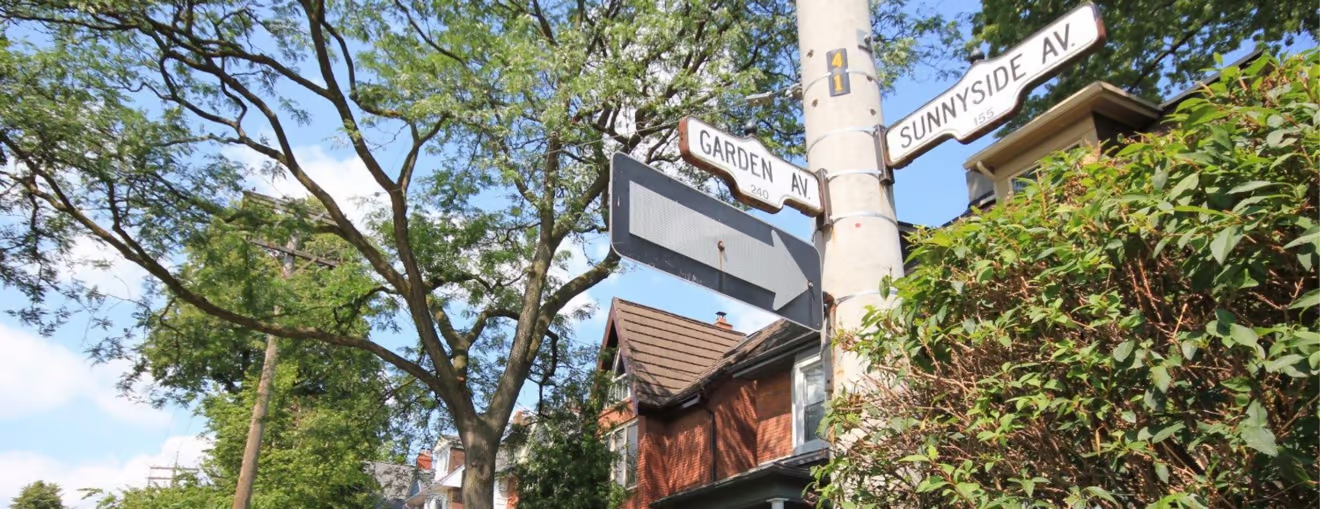May 2, 2023 | Buying
The Pros & Cons Of A New Build Home vs A Fully Renovated Older Home
On the hunt for a turn-key home in Toronto’s west end, with no renovations required anytime soon? There are essentially two categories of home renovations to consider:
1: A new-build home
OR
2: A completely renovated older home
When it comes to modern, renovated homes in Toronto’s west-end neighbourhoods, it’s less common to find an entirely new build vs. An exciting older home that’s been fully renovated. This is part of the appeal of these west-end locations as many of these century homes have been renovated while preserving the charm and character of the original build. In Parkdale, Roncesvalles, Bloor West Village, The Junction and High Park, we primarily see older homes that have undergone a complete gut job, often with interesting customization and some restoration along the way.
Further west in Etobicoke, in areas such as The Kingsway, Humber Valley and Sunnylea, there are pockets of newly constructed homes on larger-than-average lot sizes. Of course, there is a higher price tag on these, as that is the price you pay for turn-key, no-maintenance living in a city like Toronto. Buying an existing, fully renovated home typically gives you far more options when it comes to choosing a neighbourhood, as this is primarily the bulk of the inventory in this city.
In either scenario, an investment will likely be required. A turn-key home offers worry-free living without the hassle of updating or major renovations and this is definitely reflected in the listing price. While an older home requiring a few updates will be cheaper on paper, the investment required will likely bring the price tag up to match the turn-key homes mentioned above.
When faced with these options, you want to ensure you’re getting longevity out of the house. A home purchase is generally the single largest financial transaction anyone will make in their lifetime, so it’s best to know exactly what you’re getting into.
Need more home buyer tips? We’ve got plenty! Check out these posts from our blog.
- How to Evaluate a Good Fixer-Upper in the West End
- 3 Reasons It’s the Right Time Move-Up to Your Dream House
- Key Steps to Buying a House in Toronto
A new build and a recent renovation both entail living in someone else’s design. Therefore It’s important to take note of certain factors
- The quality of the renovation, both inside and out. Consider the landscaping, both cosmetic and functional. Is there adequate drainage to avoid a flooded basement or a flooded garden? Are the exterior finishes built to last? Has outdoor electrical been installed for safely plugging in lawnmowers and holiday lights?
- Quality of the finishes. Custom cabinetry is always sought after. However, store-bought cabinets have also upped their game in recent years. It’s important to inspect these finishes, as not all paints and glazes will age the same way. Whites do fade and yellow over time, and natural wood will develop a patina, often darker than the original design. The same can be said for flooring. It’s rare to see wall-to-wall carpet in homes these days, as many people opt for hardwood or laminate. These finishes are easy to clean and offer a more neutral design element.
- As with custom cabinets, the same rules apply to flooring. Solid hardwood is of course ideal, however, there are engineered hardwoods on the market now that perform even better than regular hardwood and last longer as well. If pets or kids are in your future, engineered hardwood could be something to consider. Laminate is also an excellent choice as this type of flooring generally does not require any special cleaning products and also offers exceptional longevity. The latter options are also much less expensive to purchase and install.
- Appropriate permitting process. Many of the city’s homes renovated in the 60’s through to the 80s were often completed without an appropriate permit from the city. These types of renovations can spring unexpected expenses on you when it comes time to update. The permit process is there to ensure renovations are done up to code and have been inspected by a city permit officer. An open permit on a home will fall to the new homeowner to have it closed, as open permits directly impact your home insurance. Permit information is something that can be obtained by your realtor so you know what you are getting into when you make an offer.
There are quite a few differences between both renovation scenarios that every buyer should consider. Let’s dive into the pros and cons for both types of renovations:
Fully renovated older house:
- Many unique features and historic statement pieces such as original fireplaces, stained glass windows etc. These homes still have lots of old character. An old and new combination can be really beautiful. If you are intrigued by Victorian homes, extra high ceilings, stunning crown mouldings and staircases, this is something to consider. Features like this are rarely incorporated into new builds Renovating an older home such as this can be incredibly rewarding and will always yield a unique renovation.
- For added square footage on these homes, there is often an addition built on the back of the house. This is usually a 2-3 storey home with basement, main and second storey. This extra space will often accommodate a family room, larger kitchen and a primary suite on the second floor.
- With a fully renovated older home, it’s harder to change the width of the house. Expanding the width of a home could potentially encroach on property lines and occasionally, this can result in a complete shutdown of the renovation project, as per the city.
- A huge bonus of a renovated older home is the established landscaping. Many of these homes have had gardens and trees in place since the early 20th century, there is no replacement for the shade and beauty of a mature Maple or a stunning perennial garden.
Want to learn more about life in the West End? Check out these posts from our blog.
- Why High Park is Perfect For Nature Lovers
- Our Favourite Coffee Shops in Parkdale and Roncy
- Everything Great About Condo Living in the West End
Newly built home:
- Builder warranties: Many newly built homes have warranties that can protect components of your new home for years before you need to undertake any major repairs.
- Modern touches such as high ceilings, a wider footprint, builders usually maximize the size of the house. Built-in amenities like automation, wifi, heated floors, modern appliances etc.
- Larger windows and more of them for maximum sunlight.
- No original character.
- Easier to create an ultra-modern design with an excellent flow for today’s busy lifestyles.
- Buyers may need to deal with fixes and Tarion warranty repairs as little things often come up with new builds.
- Engineered to require less care and maintenance.
As you can see, there are plenty of reasons to go for either option when house hunting in Toronto. It will really come down to how much control you want over your design, and ultimately, your budget. Fortunately, Toronto is full of options for turn-key new builds and renovated character homes, all you have to do is choose your neighbourhood and call your realtor.
Buying or Selling in the West? We Can Help!
Thinking about making a move? Click here to get in touch and request a Buyer or Seller consultation.
